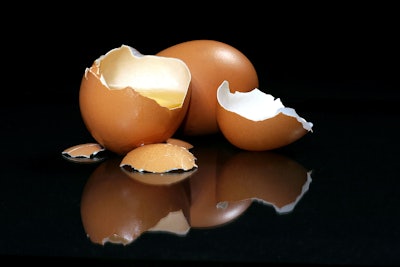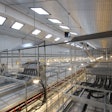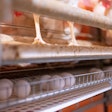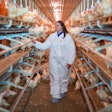
Rearing pullets in environments with perches and aviary structures is proven to improve their bone integrity and behavior when transferred to cage-free houses.
Research into hen housing has focused mainly on the layer environment. However, various research projects have found that early pullet experiences can have lasting effects concerning the development of hens’ cognition and musculoskeletal health.
The effects that rearing experiences can have on layer memory, behavior and bone integrity was discussed by Maja Makagon, Ph.D. University of California, Davis, associate professor, at the 2022 Midwest Poultry Federation Convention.
Early experiences are crucial
The pullet phase is a key development period that can affect a bird’s cognition, musculoskeletal development and ability to thrive in its environment.
“In this timeframe, we can set the birds up later in life and create long-term results that will affect how they are performing in their layer environments,” stated Makagon.
Research shows that providing perches from early on, versus eight weeks of age, has significant implications for the birds’ willingness to move across perches and tiers in layer environments.
It is in this early phase that spatial memory development occurs and birds can begin to understand how objects are located within the laying environment.
“Early experiences are crucial concerning how birds are learning to use the resources in their systems,” explained Makagon. “When pullets are reared with perches, they will start to use them withing 8-10 days of life, proving spatial memory.”
Pullets understanding of spatial distribution in aviaries impacts their ability to access resources on the various tiers and helps them to separate from aggressive birds and feather pecking.
“We know that feather pecking is contingent on early behavior. Birds tend to peck and engage with other birds early on in rearing, potentially leading to a higher incidence of severe pecking and cannibalism in layer environments,” stated Makagon.
Additionally, as pullets are moving up and down against gravity when using perches, movement will load the muscular skeletal system and affect the birds’ bone development.
“We know that access to aviary structures is going to lead to improved skeletal health, reduced keel bone fracture prevalence and fewer collisions with the structures in their environment, most likely because the birds have time to learn how to use the system early in life,” she said.
However, there are limitations in the research data available because a sizable portion of the literature focuses on perch usage in caged housing, explained Makagon. Additionally, the studies that focus on aviary systems tend to compare extremes, such as raising pullets in an aviary housing system versus raising pullets in furnished or unfurnished caged systems.
“This makes it difficult to pinpoint what an appropriate housing environment is,” she added.
To help address current knowledge gaps, Makagon and other researchers are currently performing a case study to understand the impacts of early rearing experiences on the development of spatial awareness, bone health, and keel fracture risks for layers. Preliminary results suggest that initial experiences in a pullet’s life can affect the way it responds to vertical structures, how its bones develop and how it responds to the distribution of the birds in multi-tier aviary housing.
Applying early mitigation approaches could help address the concerns observed in the layer industry, making the future results of this study powerful, concluded Makagon.


















